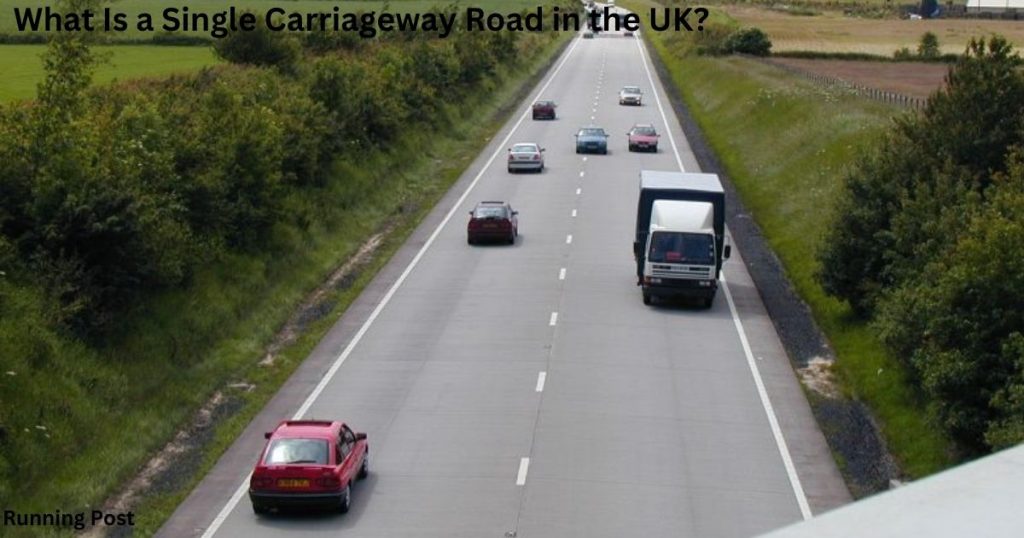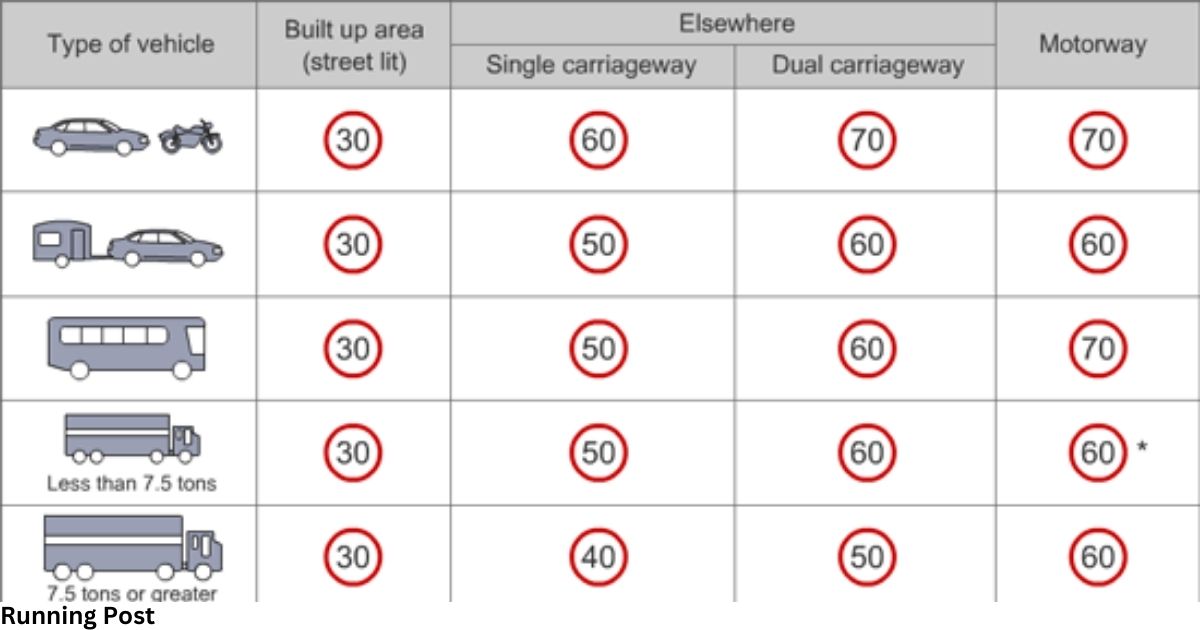| A: 60 mph | B: 50 mph | C: 70 mph | D: 30 mph |
Introduction
Overview of Speed Limits in the UK
Speed limits in the UK are designed to ensure safety on the roads, manage traffic flow, and reduce the risk of accidents. They vary depending on the type of road and the type of vehicle. Understanding these limits helps drivers make safe and legal choices while driving. This article will focus specifically on the national speed limit for cars on single carriageways, which is a key component of road safety regulations.
Importance of Understanding Speed Limits
Understanding speed limits is crucial for all road users. Speed limits are set to accommodate various factors such as road conditions, traffic density, and environmental considerations. Adhering to these limits not only helps prevent accidents but also ensures that drivers are complying with the law. Misunderstanding or ignoring speed limits can lead to fines, points on your driving license, or even more severe penalties if it results in an accident.
Focus on Single Carriageways
Single carriageways are one type of road you may encounter. They are common in rural areas and sometimes in suburban zones. Unlike dual carriageways, single carriageways have only one lane in each direction, which impacts how speed limits are set. This article will explore what a single carriageway is, the speed limit applicable to it, and how it compares to other road types.
What Is the National Speed Limit on a Single Carriageway in the UK?
Understanding the 60 mph Limit
The national speed limit for cars on a single carriageway in the UK is 60 mph. This limit is applied to ensure safe driving speeds on roads where overtaking can be more hazardous due to the lack of separation between opposing traffic. The 60 mph limit is intended to balance safety with efficiency, allowing vehicles to travel at a reasonable speed while minimizing the risk of accidents.
Specifics of the Speed Limit
The 60 mph speed limit applies to most single carriageways unless otherwise indicated by road signs. It is important to note that this limit is for cars and motorcycles. Different speed limits may apply to larger vehicles such as lorries and buses, which are generally subject to lower speed limits due to their size and weight.
When Does This Limit Apply?
The 60 mph limit applies to all single carriageways unless there are specific signs indicating a lower speed limit. It’s crucial for drivers to remain vigilant and look out for road signs that may alter the speed limit due to roadworks, temporary conditions, or special zones. Adhering to these signs ensures compliance with the law and enhances road safety.
What Is a Single Carriageway Road in the UK?

Definition and Characteristics
A single carriageway road is a type of road with one lane of traffic traveling in each direction. This means there is no physical barrier separating vehicles moving in opposite directions. Single carriageways are often found in rural areas and some suburban locations. The lack of separation can make overtaking more dangerous, which is why speed limits are set to ensure safety.
Single Carriageway Explained
Single carriageways are straightforward in their design. Unlike dual carriageways, which have two lanes in each direction and a central reservation, single carriageways only have one lane per direction and no separation between opposing traffic flows. This design can lead to higher risks during overtaking maneuvers and requires careful attention from drivers.
Differences from Dual Carriageways
The primary difference between single and dual carriageways is the lane configuration. Dual carriageways have two lanes in each direction with a central reservation separating the traffic flows, which generally allows for higher speed limits and safer overtaking. Single carriageways, with only one lane per direction, often have lower speed limits due to the increased risk of head-on collisions and accidents.
Examples of Single Carriageway Roads
Single carriageways are commonly found in less developed areas or where road development has not kept pace with traffic growth. Examples include rural roads leading to farms or small towns, as well as some suburban roads. These roads may also appear in areas with historical road layouts that haven’t been upgraded to dual carriageways.
Typical Locations
You’ll typically find single carriageways in rural and semi-rural areas, where they serve smaller communities or connect different parts of the countryside. They can also be found in areas with lower traffic volumes where a dual carriageway might be considered unnecessary or economically unfeasible.
Common Scenarios
Common scenarios involving single carriageways include rural drives, commuting to small towns, or accessing local attractions. Drivers need to be particularly cautious on these roads due to the increased likelihood of encountering slow-moving vehicles, sharp bends, and varying road conditions.
You Also Like It:
What’s a Statutory Off-Road Notification (SORN)?
How can you identify traffic signs that give orders?
What’s the speed limit for a car towing a small caravan along a dual carriageway?
What Is the Speed Limit for Cars in the UK?
General Speed Limits Across Different Road Types
Speed limits vary across different types of roads in the UK. For urban roads, the limit is usually 30 mph unless otherwise stated. On rural roads, the default limit is often 60 mph. On motorways, the limit is 70 mph. These variations help manage traffic flow and safety according to the road’s characteristics and typical traffic conditions.
Urban Roads
Urban roads typically have lower speed limits, often set at 30 mph to reflect the higher density of pedestrians, cyclists, and parked vehicles. Speed limits in urban areas are designed to enhance safety and accommodate the increased likelihood of sudden stops and starts.
Rural Roads
Rural roads, which include many single carriageways, usually have a default speed limit of 60 mph. These roads are often less congested but may have other hazards such as sharp bends or farm entrances that necessitate careful driving even at higher speeds.
Motorways
Motorways in the UK have a maximum speed limit of 70 mph. Motorways are designed for high-speed travel and have specific regulations to ensure safety, such as restricted access points and designated lanes for different types of vehicles.
Variations Based on Vehicle Type
Speed limits can also vary based on the type of vehicle. For example, lorries and buses often have lower speed limits compared to cars. This is due to the different handling characteristics and stopping distances of larger vehicles, which can affect road safety.
Cars vs. Lorries
While cars are generally allowed to travel at higher speeds, lorries and other heavy goods vehicles are subject to lower speed limits. This differentiation helps ensure that larger, heavier vehicles operate safely, considering their longer stopping distances and different handling dynamics.
Implications for Different Road Users
Different speed limits for various vehicles take into account their differing safety needs and operational capabilities. Understanding these limits helps all road users coexist safely and effectively on the road, reducing the risk of accidents and ensuring smoother traffic flow.
Is There a Minimum Speed Limit on UK Motorways?
Overview of Minimum Speed Regulations
While there is a maximum speed limit of 70 mph on UK motorways, there is no national minimum speed limit. However, drivers are expected to maintain a speed that is appropriate for the conditions and to keep up with the flow of traffic.
Minimum Speed Limits Explained
In practice, while there is no explicit minimum speed limit, drivers who travel significantly below the speed of surrounding traffic may face penalties if their slow speed creates a hazard. Motorways are designed for high-speed travel, and extreme deviations from the flow can be dangerous.
How They Differ from Other Roads
Motorways differ from other roads in their design and intended use. They are built for high-speed travel and have specific regulations to ensure safe operation. The absence of a minimum speed limit on motorways contrasts with certain other roads where speed regulations may be more strictly enforced.
Enforcement and Compliance
Enforcement of appropriate speeds on motorways is typically managed through traffic monitoring and patrols. Drivers who significantly impede traffic flow by traveling too slowly may be subject to intervention by law enforcement, though there is no specific minimum speed requirement.
How Minimum Speed Limits Are Enforced
Enforcement focuses on ensuring that drivers do not excessively disrupt traffic flow. Slow-moving vehicles that cause obstructions or safety hazards may be flagged by highway patrols and instructed to move at a safer speed or find alternative routes.
Consequences for Not Adhering
While there is no formal minimum speed limit, driving too slowly can lead to dangerous conditions and potential accidents. Drivers who fail to maintain a reasonable speed may face fines, penalties, or other legal consequences if their driving creates a hazard.
Conclusion
Recap of Key Points
To recap, the national speed limit for cars on a single carriageway in the UK is 60 mph. This limit is designed to balance safety and efficiency on roads where overtaking can be hazardous. Understanding speed limits across different road types, including single carriageways, urban roads, and motorways, is crucial for safe driving.
Importance of Adhering to Speed Limits
Adhering to speed limits is essential for road safety and legal compliance. Speed limits are set based on various factors, including road design, traffic conditions, and vehicle types. Following these limits helps prevent accidents and ensures smooth traffic flow.
Summary of Speed Limits on Different Roads
Speed limits in the UK vary based on the type of road and vehicle. Urban roads typically have limits of 30 mph, rural roads often have limits of 60 mph, and motorways have a maximum limit of 70 mph. Understanding these limits helps drivers navigate the roads safely and legally.
You Also Like It:
Releated Posts
MAB Instructor Certification: Your Gateway to Professional Crisis Management Leadership
In today’s fast-evolving professional environments—especially in healthcare, mental health, education, and corrections—conflict and aggression can arise without warning.…
Freewayget.com: Your Ultimate Platform for Deals, Discounts, and Digital Products
Introduction to Freewayget.com In today’s fast-paced digital world, finding reliable platforms that offer authentic discounts, deals, and digital…
Affordable & Fast Embroidery Digitizing Services in Your Area
Embroidery digitizing services provide corporations, designers, and people with brilliant embroidery-equipped designs by means of changing art work…
Introduction to hdhub4u nit
In this article, we will delve into the details of hdhub4u nit, exploring its features, benefits, and why…

















